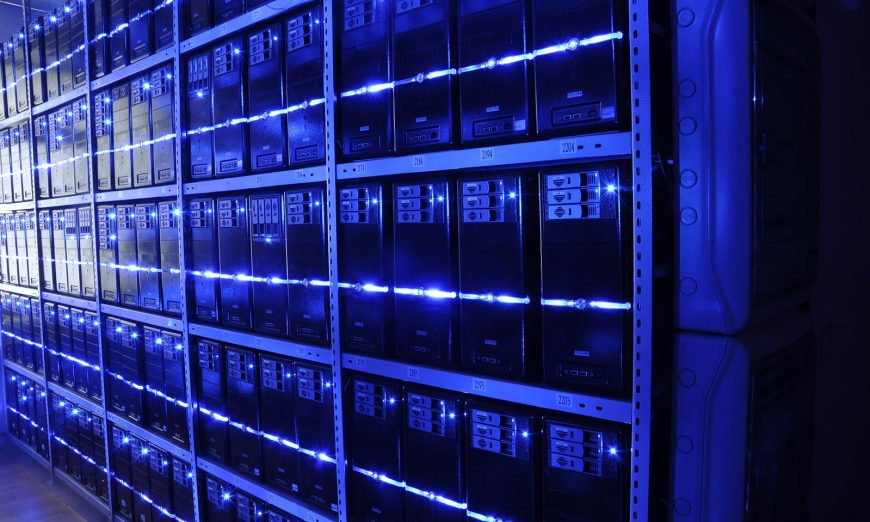The City of Santa Clara is currently working on updating its Climate Action Plan said Reena Brilliot, planning manager with the Community Development Department. The Climate Action Plan was adopted in 2013 and helps steer the City towards a more environmentally sustainable future. One of the stated goals from the plan is to, “Encourage new data centers with an average rack power rating of 15 kilowatts or more to identify and implement cost-effective and energy-efficient practices.”
The 2013 document acknowledged the economic benefit of having data centers in the City but also highlighted the considerable amount of energy they use, which at the time was 28 percent of Santa Clara’s total energy consumption. The significant percentage is due to the wealth of such centers with approximately 12 built over just the last five years. The plan also stated that 10 percent of new data centers utilized energy-efficient practices at that time.
“What brings them into the City of Santa Clara is the high reliability of our utility and the low rates,” said Mary Medeiros McEnroe, public benefit program manager at Silicon Valley Power. “We have the lowest electricity rates in the Bay Area and the lowest of any community with more than 5,000 customers in California.”
The City of Santa Clara’s public-owned electric utility, Silicon Valley Power (SVP), began a Data Center Program in 1999. At that time there were about five data centers located in the City and they were reportedly much smaller than the centers being built now, which can occupy hundreds of thousands of square feet. Today SVP sustains over 40 large data centers within its service territory.
This illustrates a steep increase in such commercial uses over the past two decades due to the ever growing demand for digital data storage to meet consumers’ appetites for internet platforms such as social media sites and video streaming services. This demand could surge even more as the Internet of Things becomes ubiquitous with the rise of autonomous vehicles and “smart” devices like thermostats and other voice-controlled home devices connected to Wi-Fi.
The Data Center Program is an added bonus for those that operate in Santa Clara. Although the State had mandated energy efficiency standards, utilities are supposed to incentivize customers to exceed what’s required in efficiency codes.
“The program was designed because large data centers were continuing to grow and new construction can be made as efficient as possible,” Medeiros McEnroe explained. “It’s a custom program that serves both new construction as well as older retrofit projects.”
Data centers with IT server loads greater than 350 kilowatts or IT cooling loads greater than 100 tons are targeted by the program, which offers incentives to implement energy-efficiency building projects to reduce overall consumption of electricity. Once the project is completed the company receives a rebate in the form of a series of performance payments. The incentive rate is $0.03 per kilowatt hour paid three months after completion of the project and then annually for four years.
Many of the projects are geared around improved design strategies to keep the information technology equipment cool, which utilizes a significant amount of the data centers’ overall energy usage. More efficient lighting controls are often added so that automatic lights illuminate areas actively used by personnel, leaving unoccupied areas dark as soon as an individual moves to another location.
In order to qualify for the rebates, data center customers must submit a program application and the project must be approved.
Medeiros McEnroe said that there has been strong participation in the program especially in recent years when the incentive began being issued as performance rebates over the course of four years; in the early days of the program the rebate was paid up front. The annual interval payments were found to be beneficial for new centers not yet operating at full capacity. Since 2007, 27 data center sites have participated in SVP’s program.
As part of the Climate Action Plan update, Brilliot said that City staff examine a pie chart of overall energy uses such as commercial, transportation and residential components. Research is being conducted to determine how much energy data centers currently consume relative to other sectors. One of the actions of the plan will be to implement strategies to make the next generation of data centers even more energy efficient.
“Santa Clara has large industrial zoning areas, which is where people usually put data centers,” Brilliot commented. “There are more opportunities for this type of commercial use because of the amount of industrial land in the City. Every time there’s a development proposal, it has to be determined whether it conforms to the General Plan. We haven’t had any proposals for data centers in places where it wouldn’t make sense.”
The City’s Development Projects List shows two data center projects — including the Coresite SV8 Data Center located at 3045 Stender Way. Building permits have been issued for that project, which is expected to be complete in the third quarter of 2019 delivering a four-story structure with 175,670 square feet of space. The approval for a data center project at 2305 Mission College Blvd. had been appealed earlier this year. In June the Planning Commission denied the appeal and recommended the project’s approval. The proposal is for a two-story building totaling 495,610 square feet.






